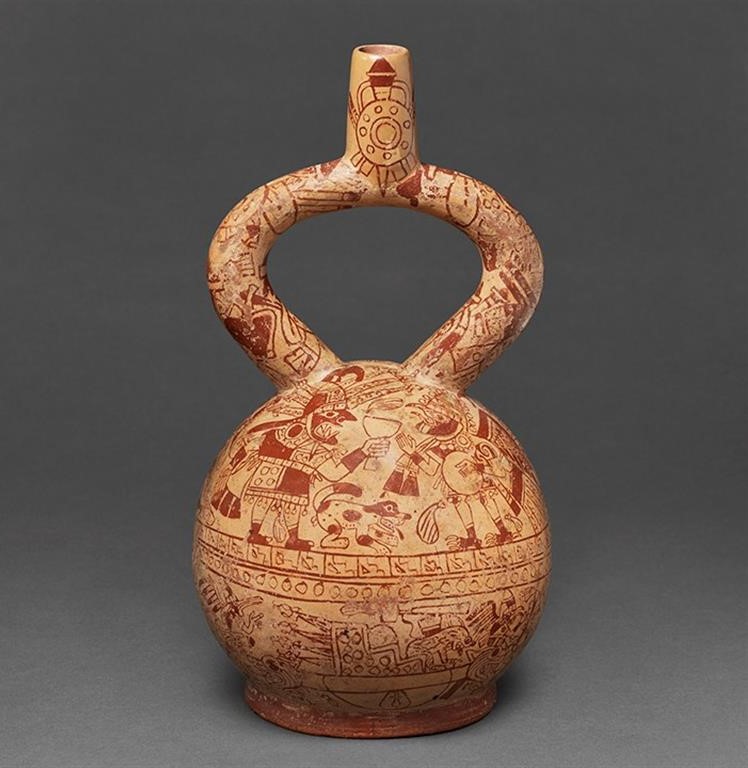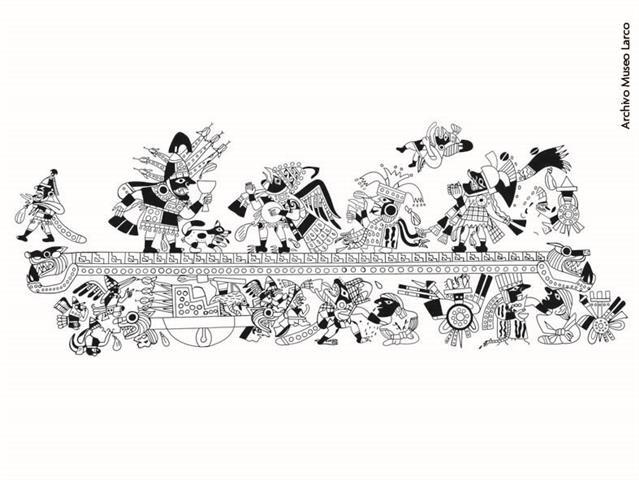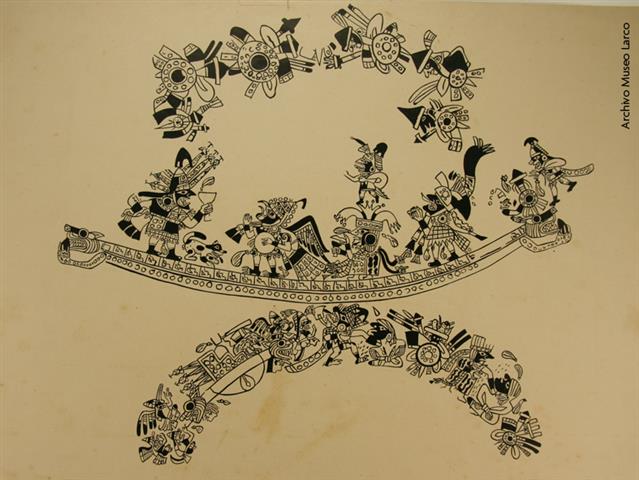Mochica Sacrifice Ceremony
Room 7, Vitrine 68
Pottery vessel
Northern coast of Peru
Florescent Epoch (1 AD – 800 AD)
ML010847
In nature, death is needed in order to give life. The human sacrifice depicted on this vessel is probably associated with the spring equinox. This is an important moment in the Andean agricultural calendar, announcing the coming of the rainy season.
- Propitiatory rites are depicted on this pottery vessel: the sacrifice of captured warriors and the presenting of a goblet to the gods.
A two-headed serpent is shown apparently holding a sacrificial heart in its hands. Its body divides the vessel into two hemispheres: an upper and lower section. - A sacrifice is depicted in the lower section; the executioner’s hands approach the neck of a naked man, who is seated with his hands tied; the blood of the sacrificial victim is collected in a vessel and offered to the gods of the celestial world.
- In the upper section, we see the gods: the Radiant God, a figure with feline fangs and a conical helmet ending in a tumi (symbol of the sun) and serpent-like rays, receives the vessel from an osprey, a bird of prey able to fly and also to submerge itself in the ocean when fishing, and therefore associated with both the celestial world and the underworld. Also depicted is the Moon Goddess, seen in a longer tunic and wearing braids that end in serpent heads. The goddess advances, carrying the vessel from the nighttime world into the world ruled by the Radiant God. Finally, we see the Owl God, shown with a half moon and owl ear headdress, who rules over the dark and damp underworld. This figure is also known as the God of the Milky Way, for its association with the night sky, stars and rainfall.
- The Owl God is the complementary opposite of the Radiant God. They represent the two forces which dominate during different periods of the year and yet at the same time complement one another: the dry season and the rainy season. This opposition is expressed in the opposing positions adopted by the two figures on the vessel.
- This vessel appears to depict a ceremonial meeting between the two gods, possibly marking an important moment within the agricultural calendar, such as the spring equinox, which heralds the beginning of the rainy season.




